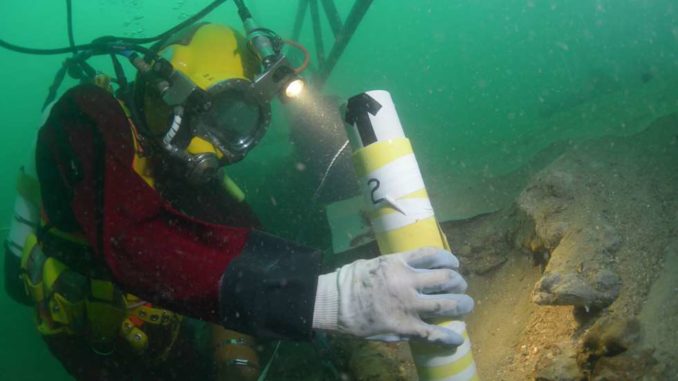
New research has revealed insights into the cargo and crew of the 18th century Dutch East India Company (VOC) ship the Rooswijk, wrecked at the Goodwin Sands in 1740.
Maritime archaeologists are diving the site, continuing the excavations started last summer, with the aim of revealing more of the Rooswijk’s story.
The Rooswijk sank on the treacherous Goodwin Sands in January 1740 with all 237 crew lost. Thousands of vessels are known to have been wrecked in this area, dubbed ‘the great ship swallower’.
As a protected wreck site the Rooswijk’s remains are owned by the Dutch Government, and managed by Historic England on behalf of the Department for Digital, Culture, Media and Sport. The #Rooswijk1740 project is led by the Cultural Heritage Agency of the Netherlands, in collaboration with Historic England and contractor MSDS Marine.
Researchers in the Netherlands have been able to positively identify and name 19 of the 237 members of the Rooswijk’s crew from documents held in Amsterdam archives. Until now it was only clear that the Rooswijk was under the authority of skipper Daniël Ronzieres, as all other records of the crew and passengers were lost in the shipwreck. Two tibia (leg bones) from two individuals have been recovered from the wreck and there is potential for more human remains to be found.
Crew members
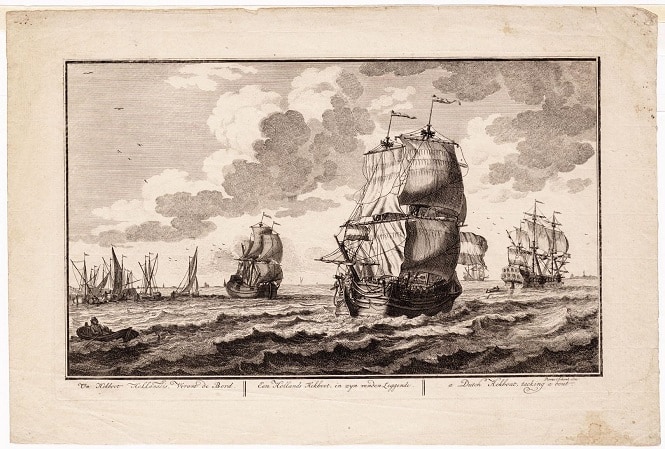
Dutch genealogists carried out new archive-based research and have been able to identify several more crew members for the first time, and a little more about their lives before tragedy struck. Those identified include a senior surgeon who travelled to the East and back several times – Gerrit Hendrik Huffelman, a 19-year-old on his first VOC voyage – Thomas Huijdekoper – and a sailor who had previously survived The Westerwijk wreck at the Cape of Good Hope – Pieter Calmer. The men on board the Rooswijk were born in the Netherlands as well as some coming from German, Swedish and Norwegian backgrounds.
Several crew members of the Rooswijk have been identified thanks to transport letters in the Amsterdam City Archives. Transport letters authorised someone to collect a part of a crew member’s salary from the VOC. It is known that VOC personnel used these letters because of a lack of cash or credit – they used them to pay for accommodation, buy supplies for the trip to Asia or exchange them for cash.
Other indivduals were found because they visited a civil-law notary before setting sail, for example to draft a will. These deeds contain the name of the ship on which the voyage was to take place, linking person and place.
The Rooswijk set off on its last journey, from the Netherlands to Batavia (modern-day Jakarta), with a lot of silver on board – all of it destined for trade in Asia. The precious metal was in high demand and was exchanged for Asian spices and porcelain. The value of the Rooswijk’s known cargo is thought to have been more than 300,000 guilders. The cargo was in the form of silver ingots and ‘pieces of eight’ – Mexican reals – these were minted to a recognised standard weight, making them perfect for international trade.
Smuggling
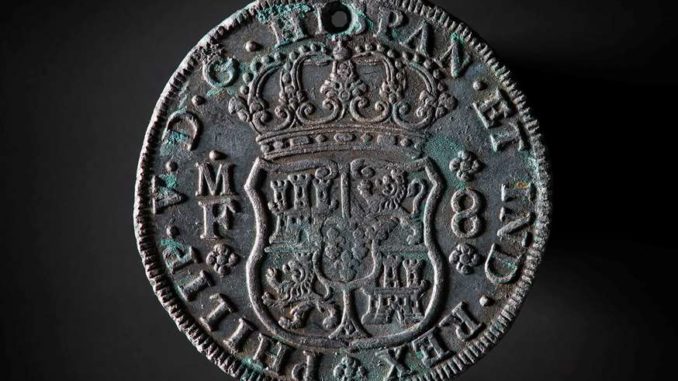
However, archaeologists have uncovered lots of other, older coins at the wreck site including ducatons from the Republic and the Southern Netherlands (now Belgium) that were not part of the sanctioned cargo. This suggests that the Rooswijk’s passengers and crew were carrying extra silver to trade illegally.
Other coins found during the dives have small holes deliberately made in them, an indication that the crew sewed them into their clothes to smuggle to the Dutch East Indies. Concealing the coins in this way also kept them safely hidden from others on board. At this time we know that people were smuggling silver in their shoes and belts, such was the demand overseas.
Smuggling silver was officially prohibited by the Dutch East India Company (VOC) although it seems to have been common practice by many VOC personnel. It’s thought that by the time the Rooswijk went down, up to half of the money being transported on these ships was illegal. It has been estimated that a total of 20 to 40 million ducatons were illegally shipped to Asia in the 17th and 18th centuries.
‘Cultural heritage’
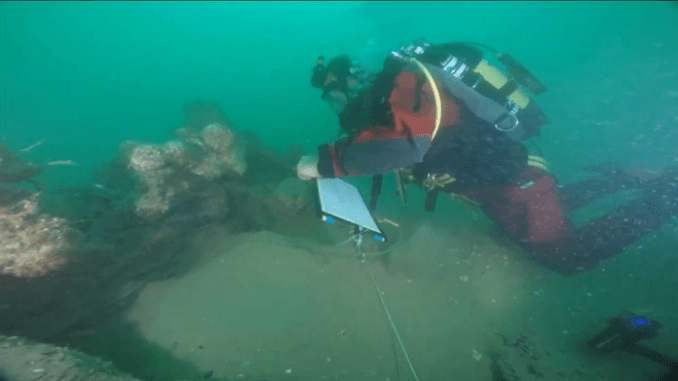
Martijn Manders, project leader of #Rooswijk1740, said:”The Rooswijk is special because it tells us about ordinary people of that time, but also about entrepreneurship, and (trade) relationships that ensured connections between cultures all over the world. We consider this to be shared cultural heritage. We therefore work closely with our counterpart Historic England.
“Our British colleagues are now mainly working on the conservation of the finds in Portsmouth, which is a very important part of the project. The finds help us tell the story of the people on board, we can relate specific personal objects to what they did in general: how they lived, what the circumstances were on board of the ship.”
Duncan Wilson, Chief Executive of Historic England, said:”It’s extraordinary that after more than 270 years we now know the names of some of the people who may have lost their lives with the Rooswijk. Sea-faring was a dangerous way of life and this really brings it home. The revelation that the Rooswijk was used to smuggle silver adds to our understanding of global trade at this time – we shall have to wait and see what else we might discover from this site in the coming months.”
2018 dives
Archaeologists are continuing to investigate the wreck. They are finding more personal items alongside boxes and barrels in the galley behind the main mast.
A ‘knee’ – a huge piece of angled wood used to support the deck – has been uncovered and will be investigated and recorded to illustrate the enormous size of the ship. The team is working towards where the stern of the ship should be with dives continuing until mid-August.
A nit comb, lead cheese container, pewter vessels and a chest full of thimbles are some of the personal items that have been conserved since their recovery from the wreck site.
Open weekend on 11-12 August
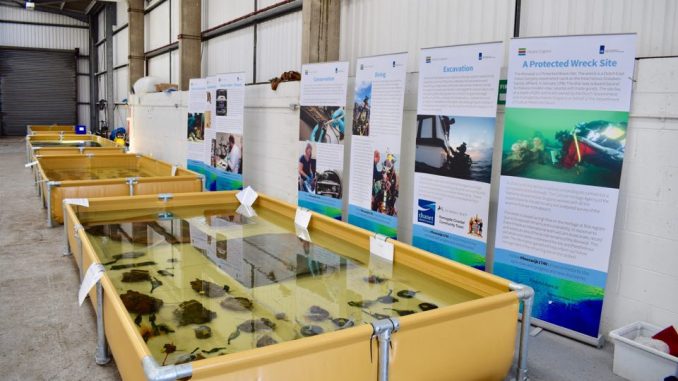
Over the weekend 11-12 August the public will be able to see extraordinary finds from the Rooswijk and explore the techniques and technology the archaeologists are using. Project specialists from conservators and archaeobotanists to zooarchaeologists and material scientists will be on hand to answer questions.
Material recovered from the wreck site is being taken ashore to a warehouse in Ramsgate where first-aid conservation will be carried out and the items fully recorded. From here finds will be taken to a Historic England storage facility where work to assess, analyse and conserve them will take place. The finds will be returned to The Netherlands and in future some material may be made available for display in Ramsgate.
The #Rooswijk1740 project contributes to Ramsgate’s Heritage Action Zone initiative.
Find more at Historic England here
Article with thanks to Historic England

